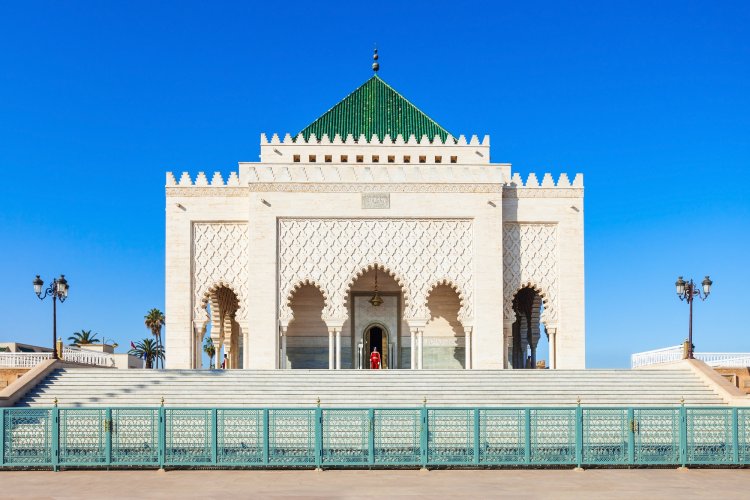The Best Time to Visit Morocco Each Season
There's no wrong time to enjoy this epic destination. The post The Best Time to Visit Morocco Each Season appeared first on Enchanting Travels.

From surfing the breezy coasts of the Atlantic to stargazing atop a dune in the fiery Sahara, Morocco is a country of contrasts. Whether you want to be immersed in the ancient souks of 9th century Fez, or be enchanted by Casablanca’s cosmopolitan nightlife, there are moments that will take your breath away around every corner. Each destination and activity in this beautiful country definitely has its ideal moment of the year to visit. Read up to find what, for your interests, would be the best time to visit Morocco.
Summer
Within Morocco seasonality, summer is the time of year you most need to be aware of when planning your trip. Tourism in places like the Sahara closes down for the summer because the heat is just too brutal. But summer in the White City of Casablanca with its Mediterranean climate is significantly less hot in summer than other Moroccan cities thanks to the moderating effect of the Atlantic’s cool Canary Current. The hottest month is August, with average temps only in the 80s F (compared to triple digit temps in much of the rest of the country). Summer brings ideal weather for picnicking on the beach, strolling the Corniche or playing with a bodyboard. Fun fact: the two time Vice-World Bodyboarding Champion has a bodyboarding school that gives lessons in nearby Dar Bouazza.
Held annually in July or August is the famous Festival de Casablanca, hosting more than 2.5 million festival-goers for a party of Moroccan music, cinema and urban art that extends for four days. And while Jazzablanca used to be held in April, this past year it moved to June. Over the course of nine days, visitors can listen to up-and-coming and globally established jazz artists on stages often located at Casa-Anfa Racecourse and Place des Nations Unies.
Tourists who visit Morocco towards the end of June can also witness firsthand Eid al-Adha, or the Feast of Sacrifice. It’s the most important Islamic holiday of the year. Vegans be warned: Muslims demonstrate their obedience to Allah by sacrificing an animal, which means most families slaughter a sheep, sometimes in their home and sometimes in the streets.
No trip to Casa (as it’s called by locals) is complete without a visit to the opulent Hassan II mosque, the largest in Africa with a capacity to hold 80,000. Only one of two mosques open to non-Islamic visitors, this truly fabulous place with a retractable roof and Moroccan marble is even bigger than Saint Peter’s in Rome.
A side trip to Meknes (less than three hours from Casa) in summer is the best time to visit Morocco’s main wine country. Being a very Muslim country, alcohol consumption here is limited, but in tourist restaurants and hotels in larger cities you can sometimes find a wine list of vin de terroir – most of which come out of Meknes.
Spring
For many, the best time to visit Morocco is in spring for the beauty that abounds in Kela’a M’gouna in the Dades Valley. Known for its high quality rose production known around the world, this is the place to stock up on rose waters, oils, creams and cosmetics to bring back home. If you go in May, there is the Rose Festival and the annual drying of the rose petals, which means most homes and some hotels’ rooftops morph into foot-deep picturesque wonderland of fragrant rose petals. The roses are able to be cultivated thanks to the water of the Dadès River that has carved intense gorges and on its way from the Atlas Mountains down to the edge of the Sahara.
Coming a close second for spring is Fes, which gets awfully hot in the later summer months. You will definitely want a guide to take you through 1,300 years of Moroccan heritage in arguably the most beautiful medina in Morocco. With 9,000 labyrinthic alleyways filled with every sight, sound, taste and smell imaginable, you don’t need to plan anything past getting happily immersed. Get a bird’s eye view of the tannery for where leather is dyed in large vats of bright colors – it is impossible to take a bad photo of this scene.
Autumn
“The Sufi Festival of Fes is a well-organized musical event and it hosts each year Sufi artists from Muslim, Jewish, Christian, Hindu and other faiths to perform together during the Sufi nights. The festival is not just confined to one square in Fes. In honor of the festival there are art exhibitions and concerts held at the Dar Batha museum, talks at Palace Jamai, free concerts in the medina and in the new city, as well as many children’s activities, making it a great family destination.” Anita Sahi
Toubkal, the highest peak of the Atlas Mountains at 4167m, is a center of Berber culture and it comes to life in fall as the sun illuminates gold, orange, red and yellow landscapes. You don’t need to be a serious mountaineer to enjoy this national park area – walk at your own pace and take in gorgeous juniper forests, sloping hillsides, and the agricultural terraces of the Berber community living in the area. If you are up for a 5-6 hour moderate trek, you will be rewarded with views of the Imlil and Azadane valleys as you reach the Tizi M’zik mountain pass.
If beachside lounging, shopping and a lazy afternoon at the hammam sounds more up your alley, try Essaouira, a laid back, picturesque coastal town and fishing port dating back to the 17th century. This growing-but-still-quaint bohemian town has attracted musicians like Jimmy Hendrix and the Rolling Stones, and the souk is full of handmade original art to buy. In the week before Rosh Hashanah mid- September, you’ll have the chance to see the annual pilgrimage to the tomb of Rabbi Chaim Pinto in the Jewish cemetery by the ocean. After exploring the town by camel, fuel up with a lunch of that day’s ocean catch cooked right in front of your eyes.
Winter
While the Atlas and Rift Mountains are covered in winter snow, there is no better time to explore the still-cozy-warm Sahara. January and February are ideal times to head to one of the two best spots for Sahara adventures, the Erg Chigaga dunes of M’Hamid El Ghizlane and the slightly more developed Erg Chebbi of Merzouga, a network of sand dunes that is 3 miles wide and 31 miles long. In either place, you can saunter your way across the ever-shifting sand dunes on a camel, try your hand at sandboarding, or opt for more speed with a quad bike adventure. Lodging is glamping style in nomadic Bedouin tents equipped for comfort. End each day with a traditional meal and live music around a fire under endless expanses of stars.
While Morocco is sure to charm at any time of the year, the best time to visit Morocco is determined by what you would most like to see or do. So start dreaming within Morocco’s seasonality and let us organize the ideal trip to this delightfully hospitable country that welcomes foreigners like family.
The post The Best Time to Visit Morocco Each Season appeared first on Enchanting Travels.
















